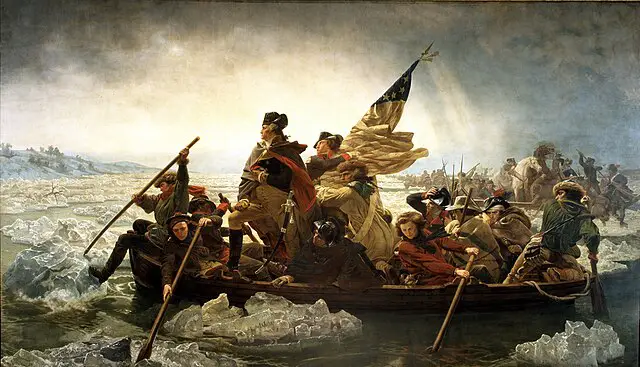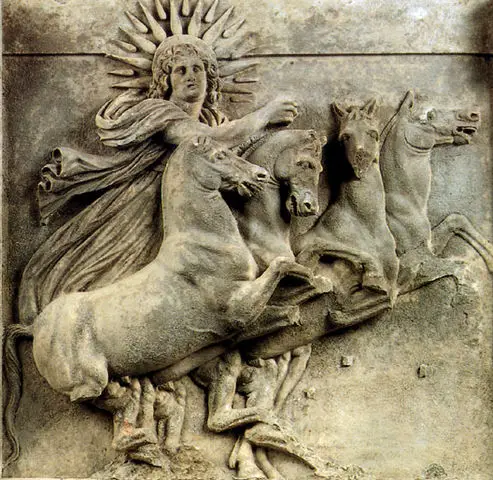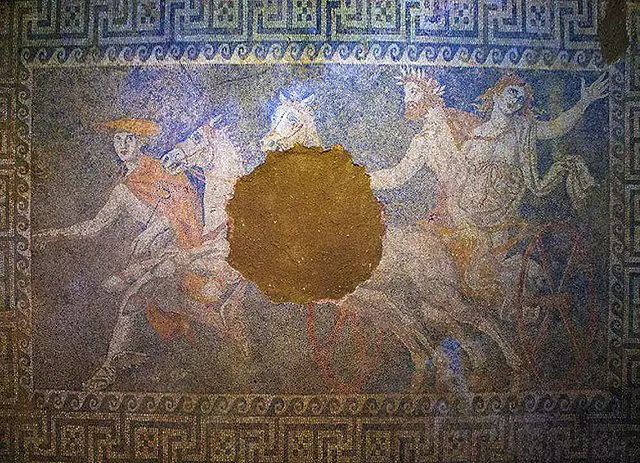| Further Reading | The 5 Roman Emperors Of The Julio-Claudian Dynasty |
The Roman Empire at its peak held territory from Egypt to Scotland. While this massive territory would allow the Empire to collect considerable amounts of resources it also came with several large drawbacks.
At its peak the Roman Empire had 3 major drawbacks from being so large. First, defending such a massive amount of territory would require a massive military. Second, the culture’s across the Empire differed drastically which caused internal struggle. Third, eventually the Roman Empire became difficult to manage by the imperial system efficiently which led to economic difficulties.
Here at The History Ace I strive to publish the best history articles on the internet. If at the end of this article you enjoyed it then consider subscribing to the free newsletter and sharing around the internet.
Without further ado, here are the 3 major drawbacks of the Roman Empire being so large.
Drawback 1: The Roman Empire Had To Fund A Massive Military Presence To Protect Its Borders
One of the major drawbacks of the Roman Empire being so large was the fact that it required constant protection from the Roman military.
Initially when the Roman Empire was growing during the 1st century AD the military budget was smaller. This was because there were not as many economic resources in the provinces.
Roman Emperors starting with Augustus would engage in military campaigns to cement their command among the troops. However, this newly conquered territory was not that well defended during the early part of the Empire.
If another army invaded the Roman provinces there was not much to seize. This was because nearly all wealth during the early Empire would be extracted back to Rome where monuments would be built.
To protect these provinces auxiliary legions would be formed from the local population. These legions were loyal to both the emperor and the local area they called home. This provided a small defense force but nothing massive.
As the Roman Empire grew during the 1st century AD however the demand for defenses began to increase. This was because during the 1st century AD the population of the Roman Empire began to increase along with the overall economic profitability of the provinces.
Starting with Emperor Trajan in the late 1st century AD there was a massive investment in the Roman military to protect the Roman provinces. After Trajan passed, each subsequent Roman Emperor would have to invest more resources into military protection and expansion.
A famous example of this can be seen in the Hadrian’s Wall which stretches for 73 miles and the Antonine Wall which is 39 miles long. Both of these massive military investments came directly after the reign of Emperor Hadrian and Emperor Antoninus Pius.
Simply put, one of the 3 major drawbacks of the Roman Empire being so large was that it started to cost more and more to defend its borders.
Drawback 2: As The Empire Grew So Did The Amount Of Cultures Which Created Internal Struggle
Another major drawback of the Roman Empire being so large was the massive amount of cultures that existed within it.
Every province, town, and village had its own unique culture associated with it. During the late Roman Republic and early Roman Empire there was little change in the unique provincial culture.
This was because all power was centered into Rome. During the early Roman Empire the emperor cared very little for official Roman culture and instead cared more about personal glory or wealth.
Examples of this can be seen in the Julio-Claudian emperors such as Caligula and Nero. Caligula didn’t care about any of the Roman provinces and instead focused upon his own glory. For example, Caligula would dress up and have Roman’s refer to him as a god as well as throw random spectators into gladiatorial fights for fun.
Nero on the other hand believed that he was the best Roman artist of all time. To commemorate his glory he had the people of Rome build a 103 ft. tall statue of himself in the middle of his massive palace.
The early Roman emperors only cared about extracting wealth from the provinces. Not so much growing an empire.
However, as the Roman Empire grew so did an effort to standardize cultural aspects of the Roman state. During the 1st century AD there was a massive push by the imperial household to begin to ‘Romanize’ the provinces regardless of their culture.
This process however began to create considerable drawbacks for the Roman Empire. Over the 1st century AD historians have discovered several large scale rebellions against Roman rule due to an influx of Roman culture.
These rebellions would cause significant internal strife for the Roman Empire and are one of the main reasons for the decline in Roman power during the 2nd-3rd century AD.
As such one of the main drawbacks of the Roman Empire being so large was the massive amount of cultures which created internal struggle.
Drawback 3: The Roman Empire Became So Large And Complex It Became Difficult For The Imperial System To Manage
Another one of the main drawbacks of the Roman Empire being so large was that it became incredibly complex to manage for the imperial system.
From 27 BC up through around 140 AD the Roman Empire was efficiently managed by the imperial government. However, as the Roman Empire started growing towards the mid to late 1st century AD it started to become incredibly hard to efficiently manage.
This was because over the span of several decades Emperors would start to move power away from the Roman Senate into their own imperial system of government. This form of government at first was effective but overtime it started to get weighed down as the Roman Empire grew in size.
This massive burden of the imperial system caused the economy of the Roman Empire to crash in what historians call today as the Crisis of the Third Century. During this crisis the value of the Roman coinage dropped to being nearly worthless after a century of Emperors devaluing it to pay for the ever-growing scale of the large imperial bureaucracy.
As a result of this one of the major drawbacks of the Roman Empire being so large was that it would require a substantial amount of people to keep the bureaucracy operating. Around the 3rd century it became too large to efficiently manage, which led to catastrophe for the Roman Empire.
Conclusion
There you have it; an entire article going over the 3 drawbacks of the Roman Empire being so large.
The study of the Roman Empire is a fascinating topic. Over 2,000 years ago the Roman Empire would evolve to become one of the most efficiently run empires in history. However, even this large empire would have several problems associated with its size.
Here at The History Ace I strive to publish the best history articles on the internet. If you enjoyed this article then consider subscribing to the free newsletter and sharing around the internet.
Further, you can check out some of the other articles below.
-
How The American Revolution Changed The World

Here is how the American Revolution changed the world. Many people are not aware of just how important this event actually was.
-
Why The Roman People Loved Chariot Racing

Why did the Roman people love chariot racing? Well it all comes down to these 3 reasons.
-
The Design and Color of Roman Chariots

What was the design and color of Roman Chariots? Were they faster or slower then normal chariots? Well here is everything!
Sincerely,
Nick